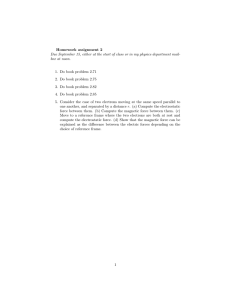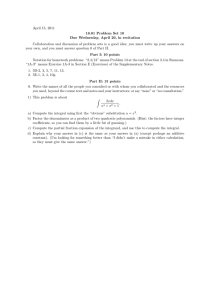PHZ 3113 Homework #5, Due Wednesday, October 13 2. Let
advertisement
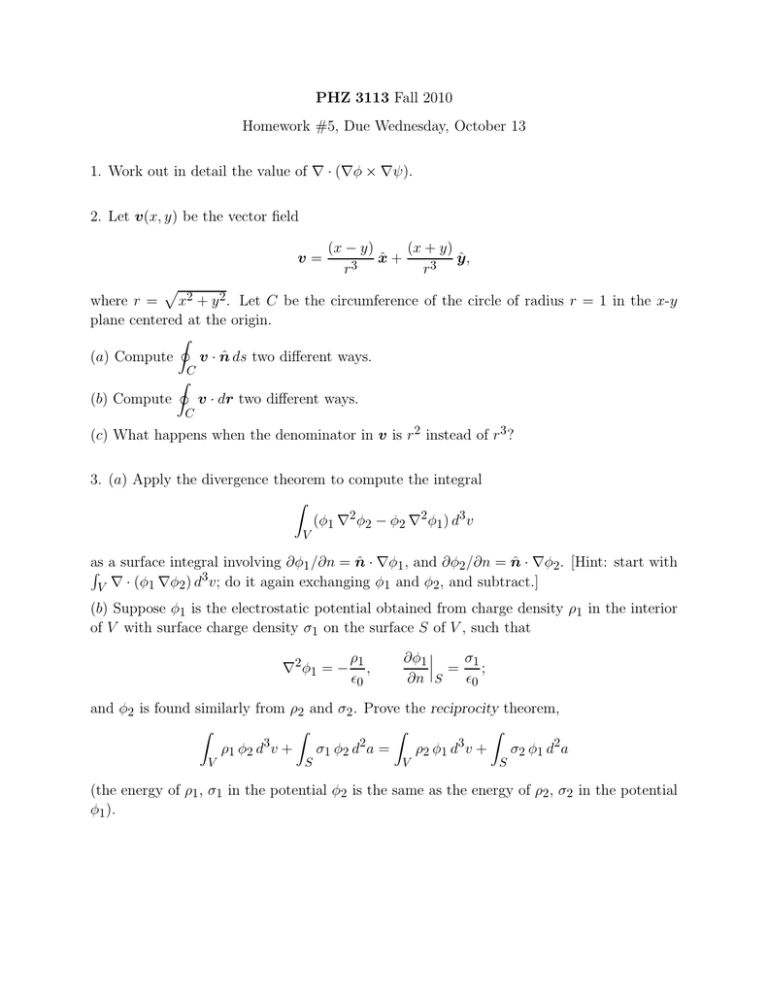
PHZ 3113 Fall 2010 Homework #5, Due Wednesday, October 13 1. Work out in detail the value of ∇ · (∇φ × ∇ψ). 2. Let v(x, y) be the vector field v= (x − y) (x + y) x̂ + ŷ, 3 r r3 p where r = x2 + y 2 . Let C be the circumference of the circle of radius r = 1 in the x-y plane centered at the origin. I (a) Compute v · n̂ ds two different ways. C I (b) Compute v · dr two different ways. C (c) What happens when the denominator in v is r 2 instead of r 3 ? 3. (a) Apply the divergence theorem to compute the integral Z (φ1 ∇2 φ2 − φ2 ∇2 φ1 ) d3 v V as involving ∂φ1 /∂n = n̂ · ∇φ1 , and ∂φ2 /∂n = n̂ · ∇φ2 . [Hint: start with R a surface integral 3 v; do it again exchanging φ and φ , and subtract.] ∇ · (φ ∇φ ) d 1 2 1 2 V (b) Suppose φ1 is the electrostatic potential obtained from charge density ρ1 in the interior of V with surface charge density σ1 on the surface S of V , such that ρ ∇2 φ 1 = − 1 , 0 ∂φ1 σ1 = ; ∂n S 0 and φ2 is found similarly from ρ2 and σ2 . Prove the reciprocity theorem, Z Z Z Z 3 2 3 ρ1 φ2 d v + σ1 φ2 d a = ρ2 φ1 d v + σ2 φ1 d2 a V S V S (the energy of ρ1 , σ1 in the potential φ2 is the same as the energy of ρ2 , σ2 in the potential φ1 ).
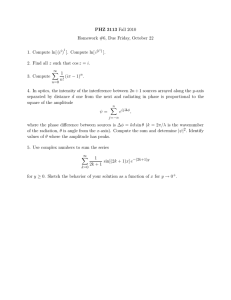
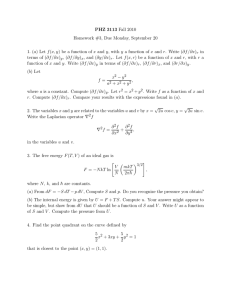
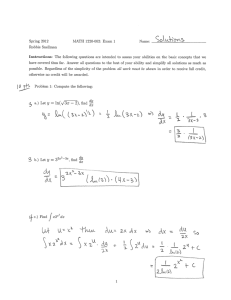
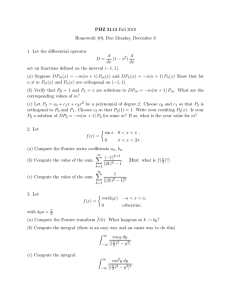


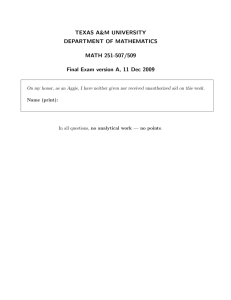
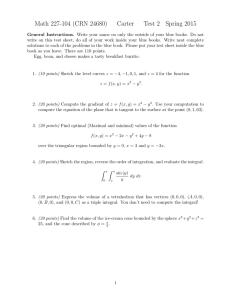
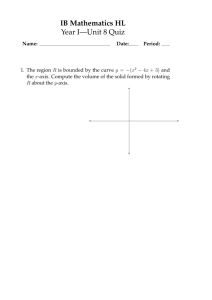
![MA2224 (Lebesgue integral) Tutorial sheet 7 [March 11, 2016] Name: Solutions R](http://s2.studylib.net/store/data/010730674_1-ca1a230eb5aca7dc4fc724de9a5a238d-300x300.png)
